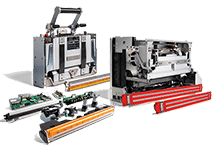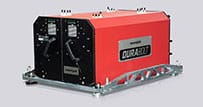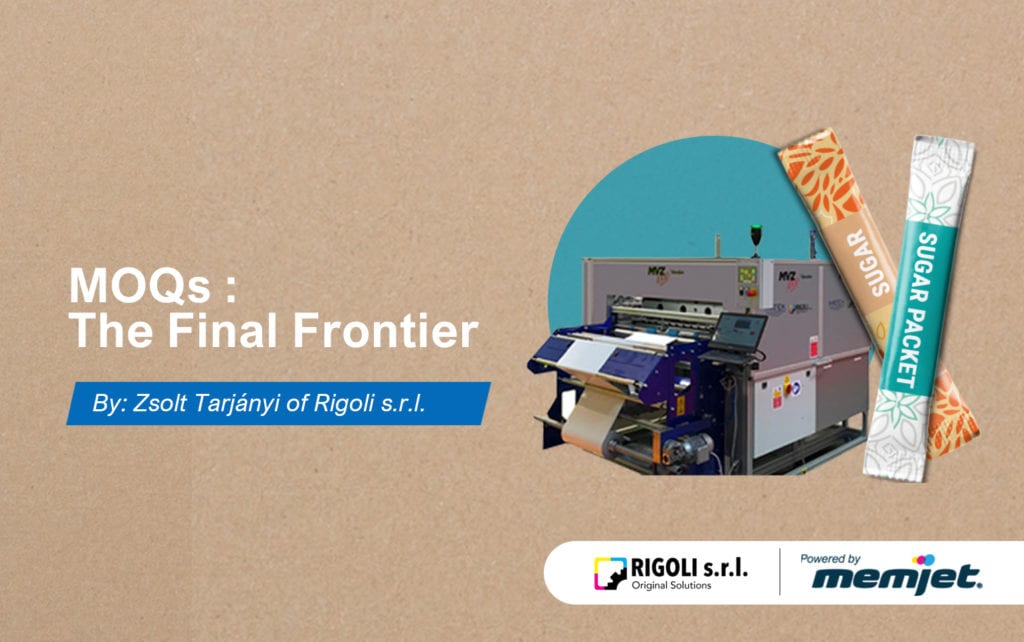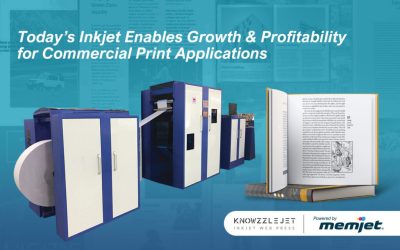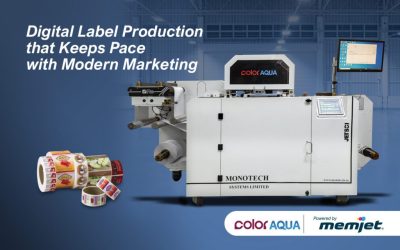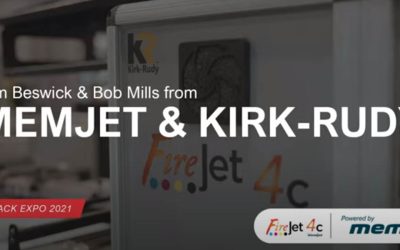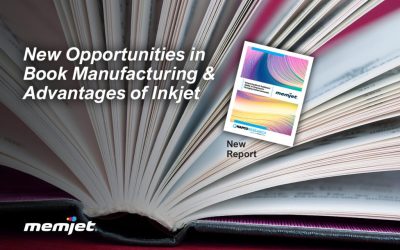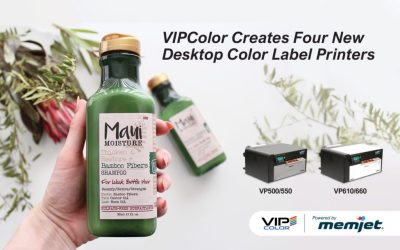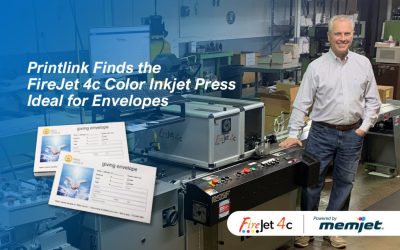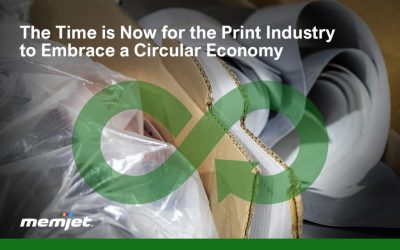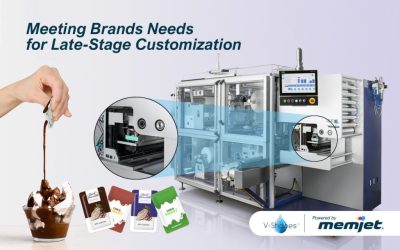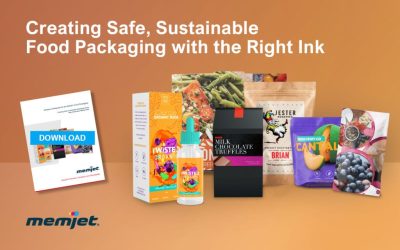By Zsolt Tarjányi of Rigoli s.r.l.
We believe that among the existing flexible packaging applications, there is still a substantial, unexplored market hidden behind the “mystery barrier” called Minimum Order Quantity (MOQ). The MOQ barrier arises from the requirements of traditional, non-digital printing methods. These requirements are technology-dependent and may consist of such items as the preparation of plates or cylinders, machine setup, calibration, make-ready wastage, etc. The MOQ can be used as a guarantee of return on the initial setup costs of the printing process. In the case of digital printing, the setup costs are absent or insignificant, therefore the MOQ is 1 or near to it. This brings great opportunities! But how does this translate to a real-world usage case? Let’s pick a scenario where we want to have personalized sugar sachets for a trade show, a birthday, or some similar event. Even if we count on a very busy fair or a huge Sicilian-style wedding, the required quantity of sachets would not be more than a couple of thousand. Sugar sachets are normally created with VFFS machines where the packaging media can be up to one meter wide. Traditionally, this media is printed on flexo presses where each plate for such a width sells for approximately 150 EUR per color. The setup costs for flexo print and the time required are relatively high, but the consumables are cheap. So, if we sketch the Piece Price (PP) diagram, we will see a decreasing, hyperbolic trend based on total quantity. On the other hand, digital printing delivers a consistent PP. By applying real consumption values to the equations, gathered in 12 months from an MVZ1000 digital press with 4 colors, the results for this application are impressive. The main findings are:
- The MOQ for such flexo runs is 100kg of media. Sugar sachets are normally made of 45gsm material, so 100kg equals approximately 2,200m2 (two thousand, two hundred square meters) of media, yielding 300,000 (three hundred thousand) standard, 5g sugar sachets or 150 10kg boxes each containing 2,000 of 5g sachets or 2,500 of 4g sachets.
- If we check the PP chart, we can see that at an MOQ of 100kg, the cost of printing sugar sachets with flexo is almost double as compared to printing them digitally.
- The break-even point where flexo print (PP) becomes less expensive is over 5,000m2. This amount of printed media is enough to make 700,000 sugar sachets. With this quantity, a local bar could serve 2,000 coffees every day for a whole year!
Print Cost for 2500 Sugar Sachets
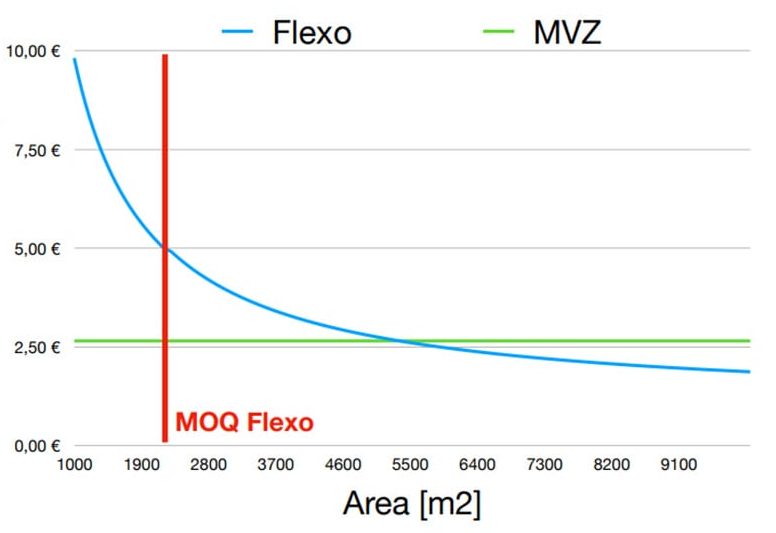
Print Cost for 2500 Sugar Sachets
After reviewing the points above and considering our original request, it’s clear that the digital approach is optimal. Combining the flexo and digital printing capabilities is the ultimate solution for flexibility to take any type of customer request – whether it be a short, medium or long print run. Similar calculations can be done for many other applications, thus leveraging the benefits of printing technologies with a good chance to reveal a potential market suppressed by the MOQ burden.
Visit Rigoli to review a full presentation on this information and product details of the MVZ100 Powered by Memjet.


